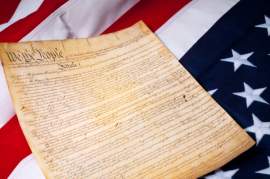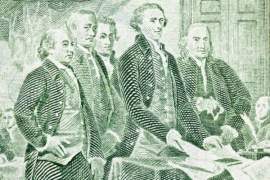
What Are Obscenities

Popular In Constitution
Purpose Of Lifetime Appointment And Pros And Cons Enumerated Powers Bicameral Legislature Background Article 3 Of The Constitution We The People 1st Amendment Who Wrote The Constitution Judicial Review Equal Protection Clause Three Fifths Compromise 10th Amendment 5th Amendment
Obscenities are defined as that which are representative of issues of indecency and profanity that remain at odds with aspects of morality. They are believed to be existent with relation to the possibility of violations of the law. In relation to the legal system, obscenities may be employed in relation to various terms, such as that of war and economics.
Despite the differences that exist depending upon the region or culture involved, the United States does possess specific laws concerning that of censorship of such implied obscenities. In general this category of law most often includes that of the regulation of pornography.
One significant aspect concerning obscenities includes that of the
"freedom of expression" as outlined in the First Amendment of the
United States Constitution. Obscenities, according to the Constitution, is
defined as the exhibition of sexual practices in an offensive manner in ways
that have no connection whatsoever to serious aspects of literature, art,
politics, or science. Due to the censorship of obscenities, such as that of
pornography, there does remain a serious issue for legal consideration.
When
referencing the United States Constitution, the Supreme Court sets forth that the
term obscenity be defined such as that which may directly infer sexual acts
that may be wholly accessible to the general public. Differences between
varying areas of obscenities may also be distinguished according to the ways in
which specific local courts litigate them. Obscenity law set forth by the Federal
Government is unique in that it guarantees the variations in what is deemed as
obscene depending upon the specific area of jurisdiction.
In order to provide a firmer grasp on issues of obscenity
as outlined by the Federal Government, we may reference that of the Supreme
Court case of Miller v. California. This case ruling led to the creation of the
"Miller test", essentially a 3 part test instituted to ascertain what
is deemed obscene and not. In addition, the Supreme Court also ruled as to the
place limitations upon the sale, conveyance, or transmission of items of
obscenity.
An important case that dealt with the production of "non-image-based" obscenity was that of Dunlop v. the United States, which maintained that it was illegal for the newspaper, The Chicago Dispatch, to be conveyed through the mail to consumers as it contained multiple obscenities. Cases such as this presented the precedence by which future hearings on obscenity will be heard and ruled. There do exist, however, critical dialogue concerning obscenity law.
NEXT: What Are The Implied Powers





















